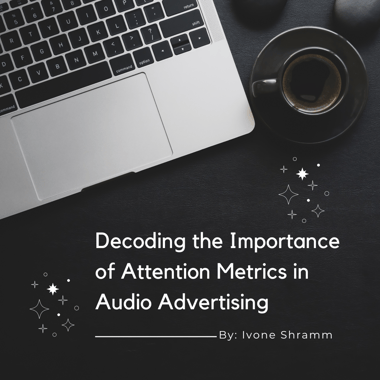In Defense Of The GRP

Posted via AdExchanger
"Data-Driven Thinking" is written by members of the media community and contains fresh ideas on the digital revolution in media.
Today’s column is written by Benjamin Masse, vice president and general manager, a2x, at Triton Digital.
The advertising industry has changed dramatically in recent years. The digital age and vast array of audience-tracking data has created
an “out with the old” mentality that doesn't always serve marketers' best interests. Digital tracking and targeting, however, has limitations, and we should think twice before abandoning the tried and true methods of the past.
The gross rating point (GRP), used by advertisers to measure the percentage of their targeted population reached, is among the tools that should withstand the test of time. With the rich data available today, some claim that GRPs, which rely on traditional data points such as age, gender and location to target audiences, are “dumbing down digital.” On the contrary, they remain a valuable piece of the puzzle.
Before I discuss the merits of GRPs, it is important to note that there isn’t one universal targeting solution that has the ability to deliver the perfect user on a silver platter. Even digital tracking options have faults. Cookies are limited to the browser, which is quickly being overshadowed by native mobile apps.
Plus, they aren’t fully dependable. Registration data can be faulty because people often enter “dummy data” or forget to update their location when they move. Contextual targeting is not relevant when it comes to viewing videos or listening to audio.
Even once you’ve used digital methods to target your audience, it’s not possible to track all conversions back to attribution. Plus, many companies use multiple channels for their campaigns, making proper attribution tracking tricky for each channel. Further, tracking offline conversions is extremely difficult.
With all of the challenges in digital targeting and attribution, it's difficult for advertisers to get an accurate measurement of the success of their campaigns. That’s where the value of the GRP comes in. GRPs provide a number which, though simple to some, helps advertisers accurately understand reach.
Most TV and radio buyers use traditional GRP to make sure they hit enough audience to impact the business. With this proof, advertisers will continue to invest – or invest more – in media buying.
Often top-tier advertisers run campaigns for the purpose of brand recognition, not increased revenues. Therefore, it is not necessary for them to go through advanced targeting or put too much weight on conversions. In this case, it’s more important for the advertiser to understand the percentage of their target audience reached, which is done through GRPs.
This is because GRPs can be used to quantify audience segments. Let’s say, for example, we are advertising a luxury vehicle. Rather than rely on a presumably accurate prefiltered audience, such as one that includes men ages 35 to 69, we can cross-reference the demographic information that we do know – gender and age – with market information.
We might overlay this information with average household income, the percentage of households with garages, and some offline behavioral information, such as those with subscriptions to Car and Driver magazine. Then we can use GRP validation technology and lookalike modeling based on success factors, such as post-listen or post-view visits, and even offline conversions tracked through a point-of-sale system. Using this process, we can validate or refine campaign filters.
While this may look less precise than standard Web-only targeting strategies, in practice, I’ve found that it delivers a better impact on revenue and makes for more accurate attribution, which is something that is top of mind for every advertiser.
In the end, advertisers shouldn’t be so quick to disregard GRPs. When correctly combined with other targeting techniques, GRPs can greatly contribute to the success and measurement of campaigns.
You can follow Benjamin Masse (@benjaminmasse), Triton Digital (@TritonDigital) and AdExchanger (@adexchanger) on Twitter.
Back to blogRelated Articles
Keep on reading the stuff you love

Decoding the Importance of Attention Metrics in Audio Advertising

2024 - The year of Audio
